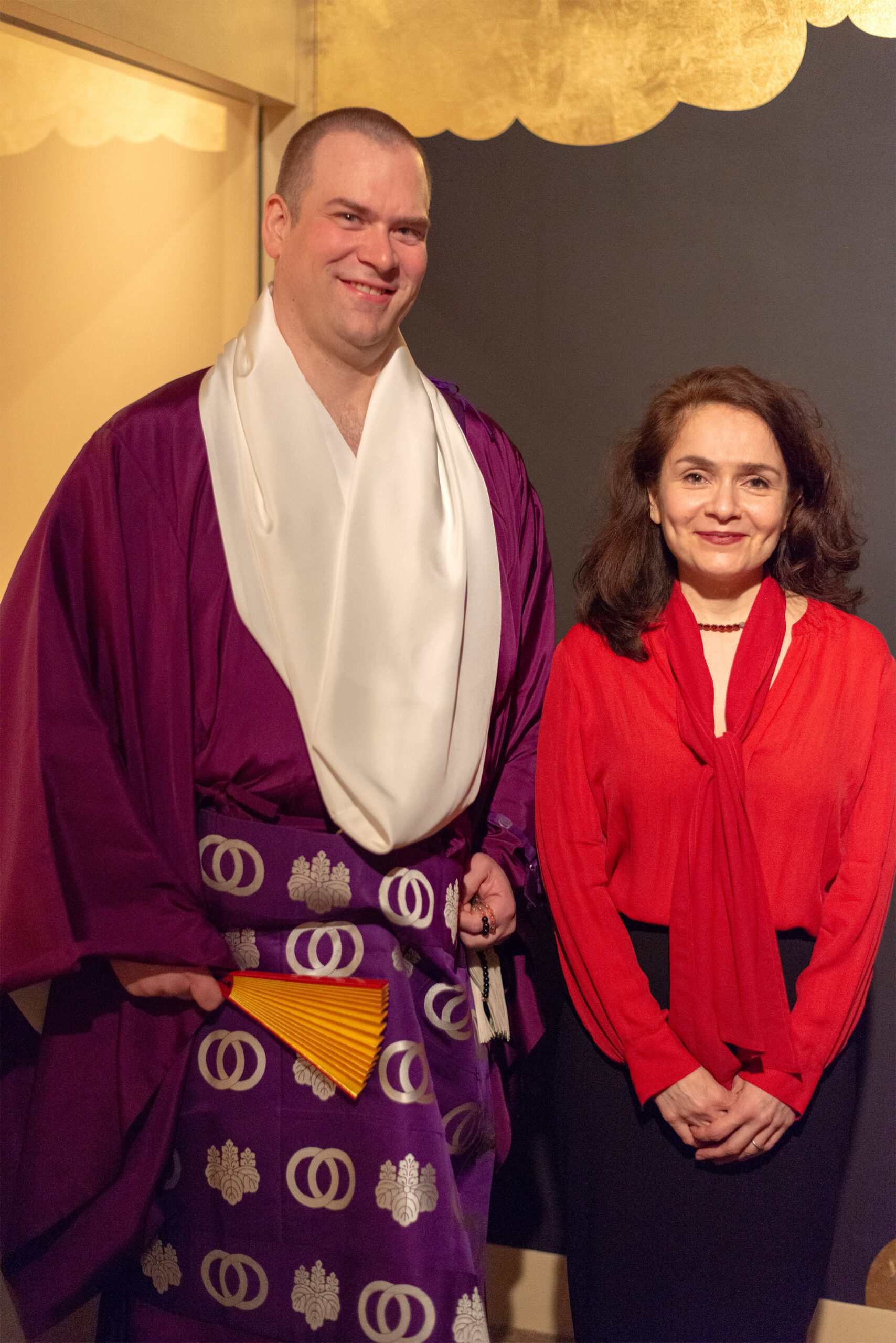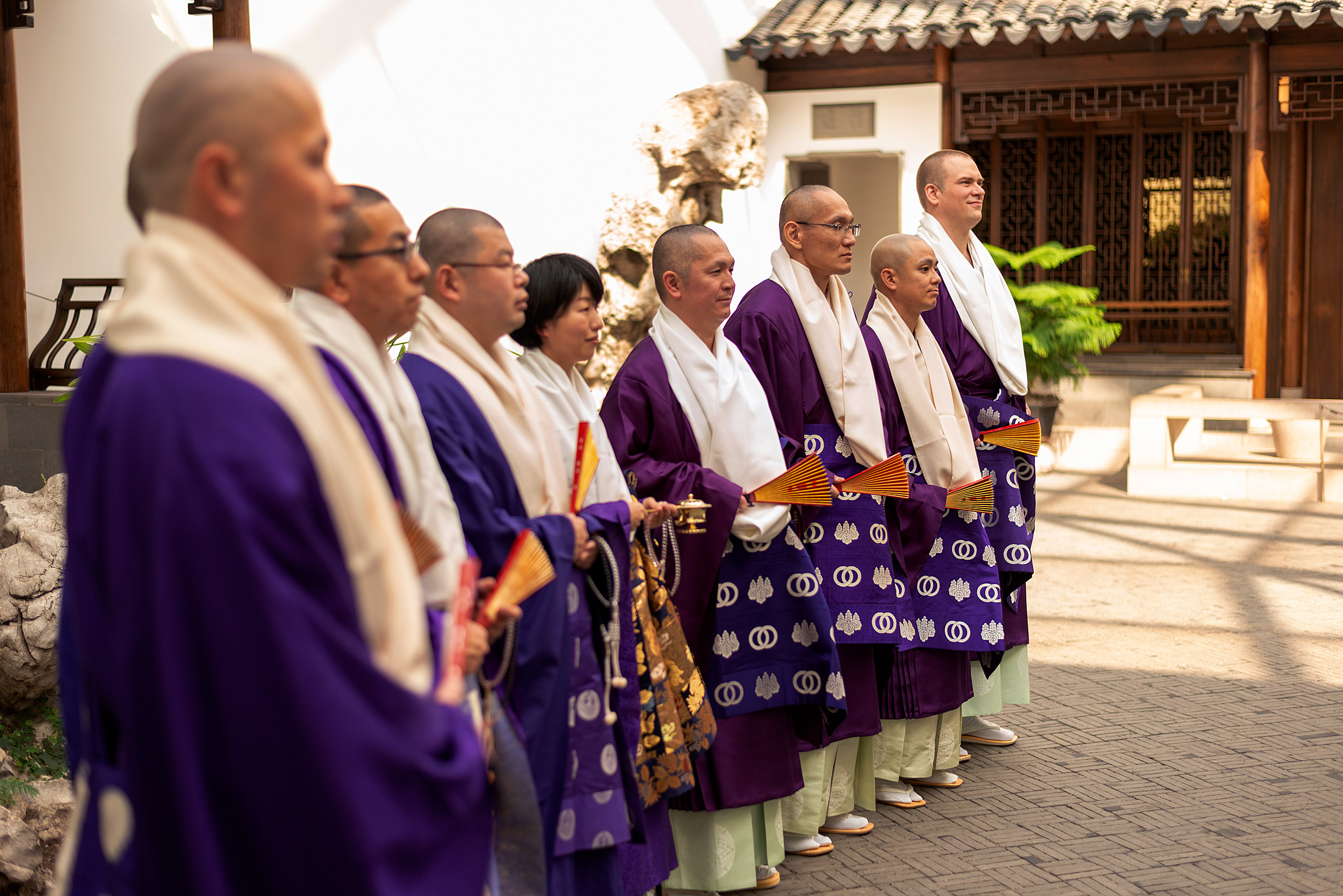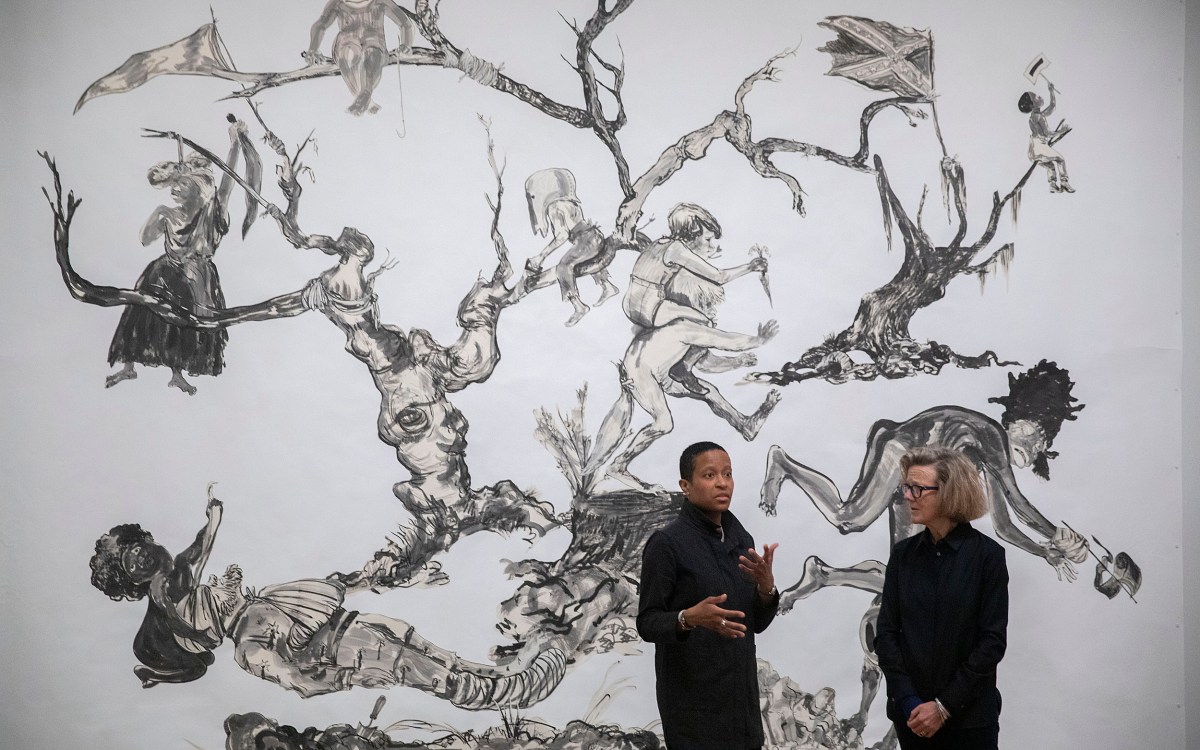Video by Kai-Jae Wang/Harvard Staff
Curating a classic ‘Genji’ exhibit at the Met
Art historian Melissa McCormick brings Japanese masterpiece to life
NEW YORK — Melissa McCormick has been teaching “The Tale of Genji,” one of the world’s first novels, for nearly 20 years, enthralling undergraduates with its unlikely female author: A lady-in-waiting writing about romance, family, court life, and politics in 11th-century Japan. Now, McCormick has expanded her classroom to include visitors to the Metropolitan Museum of Art, where her co-curated exhibition on the classic story opened on March 5.
“The one common response to ‘Genji’ is awe,” said McCormick, professor of Japanese art and culture and self-described “Genji geek,” reflecting on “how a mere court lady could have written a 1,300-page prose tale interspersed with 795 poems in 54 chapters. One of the most remarkable things about it is how it has this uncanny way of reading like a modern novel.”
McCormick conceived the exhibition “The Tale of Genji: A Japanese Classic Illuminated” and proposed it to Japanese art curator John T. Carpenter, an expert in Heian period calligraphy. Using more than 120 art works displayed in 10 thematically arranged galleries, the show reveals how readers, artists, and patrons have responded to Genji during the past 1,000 years. The team of curators, which also included the Met’s Monika Bincsik and Kyoko Kinoshita, professor of Japanese art history at Tama Art University in Tokyo, highlighted the museum’s astounding holdings alongside more than 50 works from collections in Japan and the U.S., including two of Japan’s National Treasures and several important objects from the Harvard Art Museums.
“It has this uncanny way of reading like a modern novel.”
Melissa McCormick
“I’ve shown them to countless seminars, but now we get to share them with the world and they are pivotal pieces for communicating the themes of the show,” said McCormick about Harvard’s contributions to the exhibit. “We have the ‘Prayer for Genji,’ which is a beautiful book from the 17th century, displayed in a room where we talk about the relationship between Buddhism and ‘The Tale of Genji.’ The text sanctifies the tale by trying to explicate its hidden Buddhist meaning and weaving all 54 chapter titles into a single prayer.”
Other Harvard loans, from the Philip Hofer collection of the Arts of Asia, include two 13th-century manuscripts, among the oldest Genji books to survive; the famous Genji Album from 1510, the oldest complete cycle of Genji paintings and calligraphy in the world; and a rare illustrated libretto of a Genji Noh play from the 17th century depicting a riveting scene of spirit possession and exorcism.
“The Tale of Genji: A Japanese Classic Illuminated,” which runs through June 16 at the Met, devotes a room of the exhibition to celebrating the story’s connection to Buddhism. Legend has it that author Murasaki Shikibu was compelled to write the tale at Ishiyamadera Temple outside Kyoto on a night when the moon reflected on Lake Biwa. Portrait icons of Murasaki and a Heian-period Buddhist sculpture of the bodhisattva Nyoirin Kannon, lent by the temple and displayed outside Japan for the first time, celebrate the book’s religious reception and the power of the female author.


Jesse LeFebvre, an ordained Shingon Buddhist priest and GSAS student pictured here with curator and professor Melissa McCormick, participated in a ceremony to consecrate the exhibit space.
Photos by Kai-Jae Wang/Harvard Staff
In examples ranging from the 16th century to Yamato Waki’s manga masterpiece that concludes the show, this exhibition also features more Japanese female artists than ever before. “Women throughout history debated the strengths and faults of the characters that Murasaki Shikibu brought to life and created lively amateur paintings, while professional female artists and writers illustrated and adapted the entire tale,” said McCormick, who is also a Harvard College Professor.
Ishiyamadera will soon be headed by a female priest for the first time since its founding in the eighth century. The future head, Washio Ryuge, led a group of nine priests, including Jesse LeFebvre, an ordained Shingon Buddhist priest and GSAS student working on his Ph.D. in Japanese religion, in a consecration of the space with a ritual ceremony. Dressed in purple silk robes, the priests entered the room, scattering paper flower petals like the ones said to have fallen miraculously when the Buddha preached. They chanted Shichi no bongo (the Sanskrit hymn of the “four wisdoms”), a Chinese piece called Sange (“Scattering Flowers”), and the Heart sutra. In a climactic moment, the young priestess recited a statement of purpose (hyobyaku) blessing the space, setting the exhibition on a good path, and praying for peace in the world.
“For Ishiyamadera, these aren’t just artworks,” McCormick explained. “They are Buddhist sacred sculptures that need to be cared for and venerated properly.”
LeFebvre, who studied alongside Ryuge at Shuchiin University, a Buddhist seminary in Kyoto, called the ceremony, particularly the priestess’ presence, profound.
“It was not only a once-in-a-lifetime, but once-in-an-age opportunity to witness an esoteric Buddhist ceremony conducted by the heir to the temple,” LeFebvre said. “Ishiyamadera is not only one of the most important temples in Japan, but one of the most important for Buddhist women. It was a performance meant to honor women and Buddhism, but it also had an element that is extremely important to both scholars and people interested in art and literature.”
More like this
“It was fortuitous karma that Harvard and the Metropolitan Museum were interested in the treasures of Ishiyamadera and the history of Buddhist women at the same time that we were interested in sharing these with people outside Japan,” said Ryuge after the ceremony.
LeFebvre said the show felt like a weaving of his faith and his scholarly work. “I often get posed the question, ‘Do you perceive any barrier that your faith might present to your research?’” he said. “To which I would say it’s quite the opposite. It informs you in a way you just can’t get access to otherwise. It would be like spending your entire life reading sheet music, but never holding a guitar or playing the piano.”
Harvard opened his eyes, LeFebvre said, “in the sense that in Japan when I was doing my training and studying it was very textual- and ritual-based, and the thing that brings this together over time and space is artistic and literary works. For me, it’s an integration of so many aspects of my life, which a friend of mine who is not very religious calls a grand contradiction. But I actually see it as a weaving of the kind of tale that presents unique insights that couldn’t be had any other way.”





